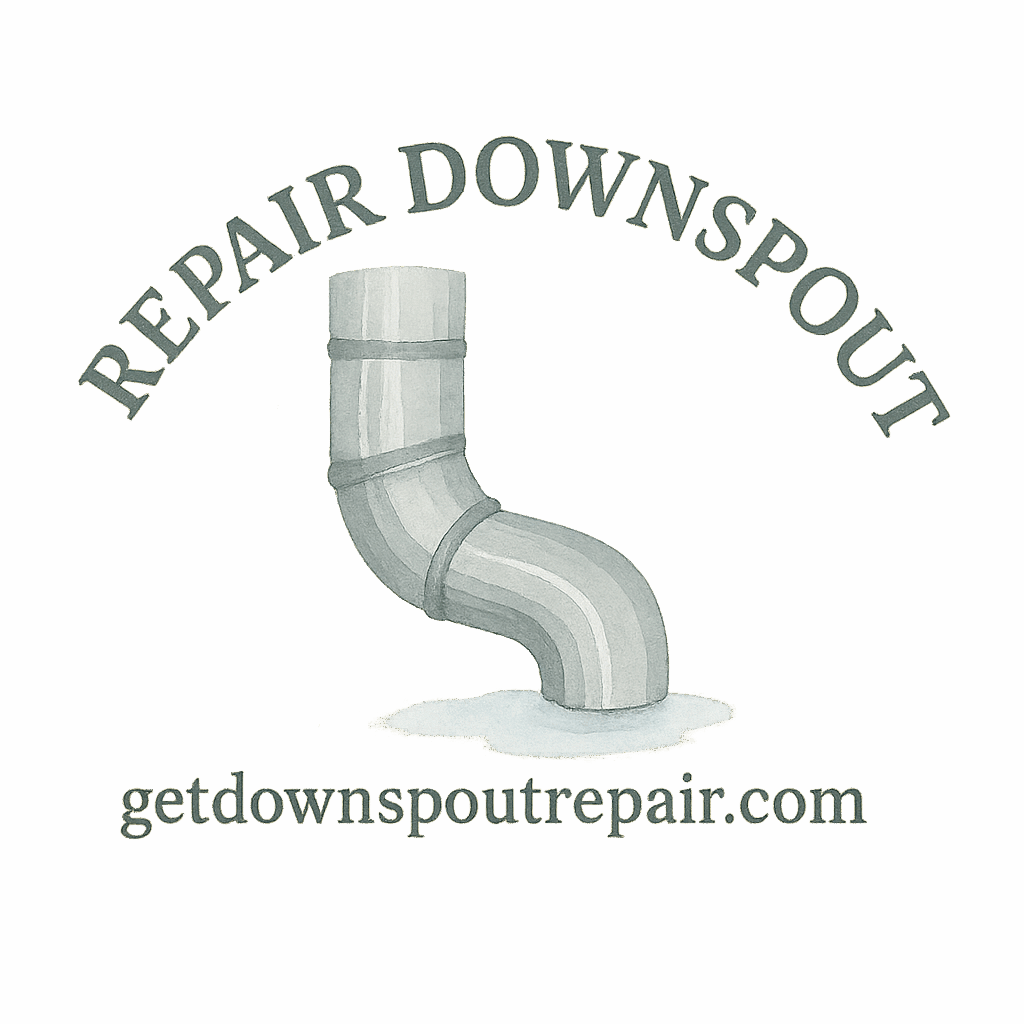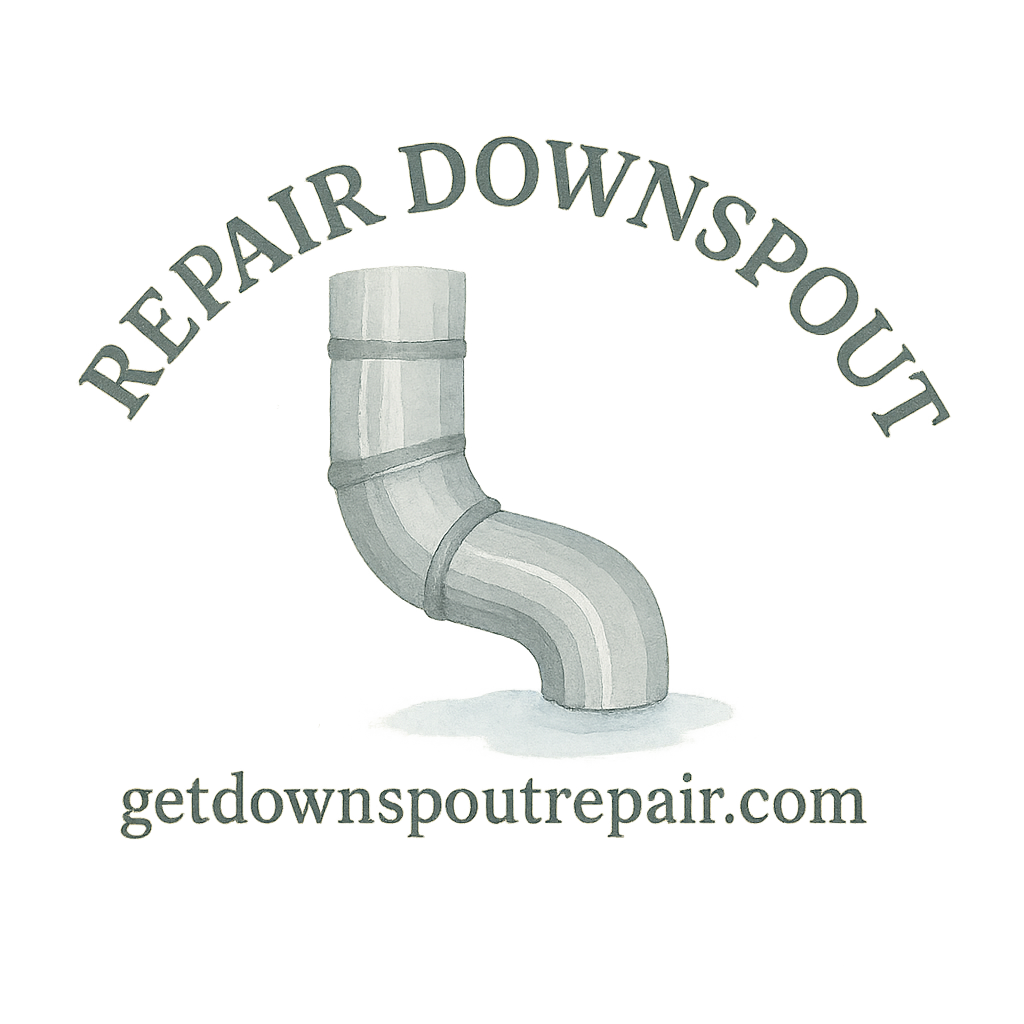Introduction: Why Downspout Repairs Matter
Let’s be real—downspouts are not the most glamorous part of your home. Most of us don’t even notice them until water starts pooling in the yard, gutters overflow like a waterfall, or worse—your basement takes on the role of an indoor swimming pool. Ignoring your downspout system can lead to massive (and expensive) water damage issues.
Yet, despite their importance, there are plenty of myths about DIY downspout repair that keep homeowners from making the right decisions. Today, we’re busting five of the most common downspout repair myths and showing you how to protect your home the right way.
👉 Want to dive into repair basics first? Check out this guide: Downspout Repair Basics.
Myth #1: “A Small Clog Will Fix Itself”
Why This Myth Exists
Homeowners often believe that rainwater has enough force to flush out minor blockages. After all, it’s just leaves and twigs, right? Wrong.
The Real Problem With Ignoring Clogs
Small clogs quickly grow into big problems. Instead of washing away, debris tends to compact, trapping more dirt until your downspout is fully blocked. This leads to standing water in your gutters, leaks along the seams, and even roofline rot.
Long-Term Damage Caused by Neglect
When you ignore clogs, water looks for the path of least resistance—usually straight down your siding or into your foundation. Over time, this neglect results in:
- Mold growth on walls
- Cracks in the foundation
- Damage to landscaping
💡 Learn how to handle clogs properly here: DIY Downspout Fixes.
Myth #2: “Any Tape or Sealant Works for Leaks”
Why People Rely on Quick Fixes
It’s tempting to grab a roll of duct tape or squeeze a little caulk around a leak and call it a day. The problem? That’s like slapping a bandage on a broken bone.
Why Sealants Alone Don’t Solve the Issue
Sealants may temporarily stop drips, but they don’t address the underlying cause—usually rust, corrosion, or improper alignment. Within weeks, leaks return, often worse than before.
Safer Alternatives for Lasting Repairs
Instead of relying on quick fixes, try:
- Replacing worn sections with quality products
- Using downspout-specific repair tools
- Ensuring joints and connections are properly fitted
👉 For material insights, see: Downspout Costs & Materials.
Myth #3: “Downspouts Don’t Affect Foundation Damage”
The Misunderstanding About Drainage
Some homeowners think foundation problems are strictly structural issues, unrelated to gutters or downspouts. But the truth? Your drainage system is the frontline defense against water infiltration.
The Costly Reality of Foundation Issues
Water pooling near your foundation can seep into cracks, leading to basement flooding and weakening the concrete itself. Repairing foundation damage can cost tens of thousands—far more than fixing a downspout.
How Proper Drainage Protection Saves Money
With correct installation and maintenance, downspouts channel water safely away from your home. Extensions, splash blocks, and underground drains make a huge difference.
👉 Check out this essential guide: Drainage Protection.

Myth #4: “DIY Repairs Are Always Cheaper Than Hiring a Pro”
The Hidden Costs of DIY Mistakes
Sure, DIY seems budget-friendly upfront. But if you misalign a section, use the wrong tools, or damage your gutters in the process, you’ll spend more fixing your mistakes.
When Professional Help Is Worth It
Some repairs—like correcting poor slope or replacing entire downspout sections—require expertise. Professionals bring the right tools, knowledge, and experience to ensure long-term results.
Knowing When to Call a Licensed Contractor
If you’re unsure, call a licensed contractor before attempting risky repairs. They’ll save you from unnecessary headaches and costly water damage.
👉 Learn when to go pro here: Professional Help Guide.
Myth #5: “Downspout Maintenance Is Optional”
Why Homeowners Skip Maintenance
Downspouts don’t demand daily attention, so they often fall low on the priority list.
The Consequences of Neglect
But skipping maintenance allows debris to accumulate, rust to spread, and water to reroute into your home. This neglect not only shortens your downspout’s lifespan but also risks major structural damage.
Simple Habits That Prevent Bigger Repairs
- Schedule seasonal cleanings
- Inspect joints for leaks
- Use gutter guards to minimize debris buildup
👉 For practical steps, see this: Prevent Clogging.
Smart DIY vs. Pro Repairs: Finding the Balance
Beginner-Friendly DIY Fixes
Some tasks—like clearing clogs or tightening loose brackets—are perfect for beginners. If you’re just starting out, explore Beginner Repair Guides.
When to Use Premium Tools & Quality Products
Investing in premium tools ensures you don’t have to repeat repairs. Quality matters when dealing with water control systems.
Red Flags That Demand Expert Intervention
- Recurring leaks even after DIY fixes
- Persistent clogs
- Visible foundation cracks
👉 See expert advice here: Downspout Expert Insights.
Budget-Friendly Repair Tips for Homeowners
How to Save Without Cutting Corners
Don’t confuse “cheap” with “smart.” Using budget-friendly strategies like reusing functional sections and shopping for deals on repair tools can keep costs down without sacrificing quality.
Choosing Between DIY Tools and Professional Gear
Every homeowner should own basic DIY tools, but for larger projects, consider renting professional-grade equipment instead of buying.
👉 More money-saving advice here: Budget Tips.
The Benefits of Regular Downspout Care
Preventing Water Damage
The biggest benefit? You’ll protect your home from expensive water intrusion.
Extending Gutter and Roof Life
Clean, functional downspouts reduce stress on your gutters and roof, extending their lifespan.
Boosting Property Value
Well-maintained drainage systems improve curb appeal and reassure potential buyers your home is protected.
👉 Discover more benefits: Downspout Repair Benefits.
Conclusion: Ignoring Myths, Protecting Your Home
DIY repairs are fantastic when done right—but falling for these common myths can turn a simple project into a costly disaster. By separating fact from fiction, you’ll save money, protect your property, and avoid the headaches of water damage.
Whether you’re a hands-on homeowner or prefer calling in the pros, what matters most is keeping your downspouts functional and well-maintained.
FAQs
1. Why are downspout clogs so dangerous?
Clogs force water to overflow, damaging siding, foundations, and landscaping.
2. Can I use duct tape for a quick downspout fix?
Not recommended—duct tape is a temporary band-aid and won’t hold up in rain.
3. How often should I clean my downspouts?
At least twice a year—spring and fall are ideal.
4. Do clogged downspouts cause roof leaks?
Yes, water backup can overflow into shingles, leading to roof leaks.
5. Is hiring a pro worth the cost?
Absolutely—especially for complex repairs that could lead to foundation damage if done wrong.
6. Can DIY beginners handle small downspout repairs?
Yes—simple fixes like unclogging and tightening brackets are beginner-friendly.
7. What’s the best way to prevent clogging?
Install gutter guards, clean regularly, and inspect after storms.


